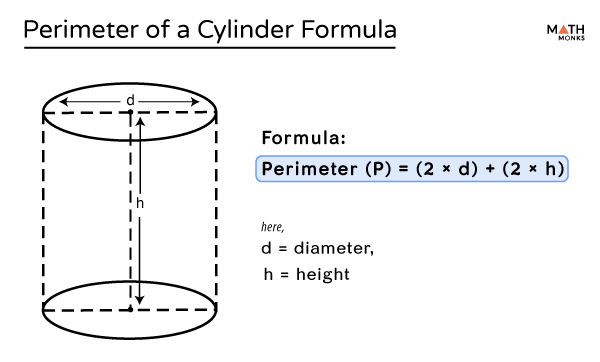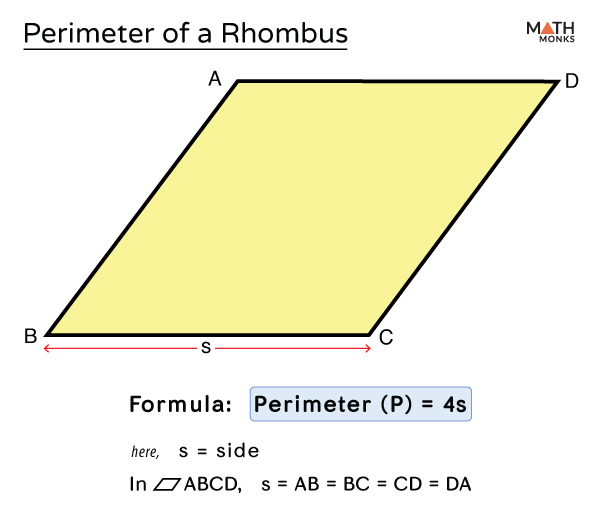Topic how to perimeter of a square: Learn how to calculate the perimeter of a square quickly and accurately with our easy-to-follow guide. Whether you're a student, a teacher, or just someone looking to refresh your math skills, this article will provide you with all the information you need to master this essential geometry concept.
Table of Content
- How to Calculate the Perimeter of a Square
- Introduction
- Definition of a Square
- Understanding Perimeter
- Formula for Perimeter of a Square
- Step-by-Step Guide to Calculate Perimeter
- Examples of Perimeter Calculation
- Common Mistakes to Avoid
- Applications of Perimeter Calculation
- Practice Problems
- Conclusion
- FAQs
- YOUTUBE:
How to Calculate the Perimeter of a Square
The perimeter of a square is the total distance around the outside of the square. To calculate the perimeter of a square, you can use the following formula:
Formula
The perimeter \( P \) of a square with side length \( s \) is given by:
\[ P = 4s \]
Steps to Calculate the Perimeter
- Measure the length of one side of the square. Let this length be \( s \).
- Multiply the length of the side by 4.
- The result is the perimeter of the square.
Example Calculation
Suppose you have a square with a side length of 5 units. To find the perimeter, you would calculate:
\[ P = 4 \times 5 = 20 \]
Therefore, the perimeter of the square is 20 units.
Summary
- The perimeter of a square is four times the length of one side.
- Use the formula \( P = 4s \) where \( s \) is the side length.
- This calculation is straightforward and quick, making it easy to determine the perimeter of any square once you know the side length.
| Side Length (s) | Perimeter (P) |
| 1 | 4 |
| 2 | 8 |
| 3 | 12 |
| 4 | 16 |
| 5 | 20 |

READ MORE:
Introduction
The perimeter of a square is a fundamental concept in geometry, representing the total distance around the outside of the square. Understanding how to calculate the perimeter is essential for students, educators, and anyone working with shapes and measurements. This guide will walk you through the definition of a square, the formula for calculating the perimeter, and provide step-by-step instructions for accurate calculations.
- Definition of a Square: A square is a four-sided polygon, or quadrilateral, with all sides of equal length and all angles equal to 90 degrees.
- Perimeter Definition: The perimeter is the total length of all the sides of a polygon.
- Perimeter Formula: For a square with side length \( s \), the perimeter \( P \) is calculated using the formula: \[ P = 4s \]
- Step-by-Step Calculation:
- Measure the length of one side of the square. This is your side length \( s \).
- Multiply the side length by 4 to find the perimeter.
- For example, if the side length is 5 units, the calculation is: \[ P = 4 \times 5 = 20 \] Thus, the perimeter is 20 units.
- Importance of Perimeter Calculation: Knowing how to calculate the perimeter of a square is useful in various real-life applications such as construction, crafting, and any project involving space and boundary measurements.
By mastering the calculation of a square's perimeter, you will gain a valuable skill that applies to many practical and theoretical tasks in geometry and beyond.
Definition of a Square
A square is a four-sided polygon, also known as a quadrilateral, characterized by the following properties:
- All four sides of a square are of equal length.
- All four interior angles are right angles (90 degrees).
- The opposite sides of a square are parallel to each other.
In a square, the diagonals have unique properties:
- Both diagonals are of equal length.
- The diagonals bisect each other at right angles.
- Each diagonal divides the square into two congruent isosceles right triangles.
Mathematically, if the length of one side of a square is denoted by s, the perimeter P of the square can be calculated using the formula:
\( P = 4s \)
This fundamental understanding of a square is crucial for various geometrical calculations and real-world applications, including perimeter calculation, which is discussed in the subsequent sections.
Understanding Perimeter
The perimeter of a shape is the total length of its boundaries. It is a linear measurement that represents the distance around the shape. For different geometric shapes, the method to calculate the perimeter varies. Let's break down the concept of perimeter step by step:
-
Definition:
The perimeter is the sum of the lengths of all the sides of a polygon. For a polygon with n sides, the perimeter is the total distance covered by all sides.
-
Units of Measurement:
Perimeter is measured in linear units, such as meters (m), centimeters (cm), inches (in), or feet (ft), depending on the units used for the sides of the shape.
-
General Calculation:
To find the perimeter of any polygon, add up the lengths of all its sides. For example, if a polygon has sides of lengths a, b, c, and d, the perimeter P is:
\( P = a + b + c + d \)
-
Special Case - Square:
A square is a special type of polygon where all four sides are of equal length. If each side of the square is of length s, the perimeter P of the square is calculated by multiplying the length of one side by four:
\( P = 4s \)
Understanding the concept of perimeter is fundamental in various real-world applications, such as determining the amount of material needed to fence a property or the total length of trim required for a project.
Formula for Perimeter of a Square
The perimeter of a square is the total distance around the outside of the square. To calculate the perimeter, you need to know the length of one side of the square. Here is the step-by-step process to understand and use the formula for finding the perimeter of a square:
-
Identify the Length of One Side:
Let's denote the length of one side of the square as s.
-
Understand the Properties of a Square:
In a square, all four sides are of equal length. Therefore, if one side is s, all four sides are also s.
-
Formula for Perimeter:
To find the perimeter P of a square, you sum the lengths of all four sides. Since all sides are equal, the formula can be simplified to:
\( P = 4s \)
-
Step-by-Step Calculation:
- Measure the length of one side of the square.
- Multiply this length by 4 to get the perimeter.
For example, if the length of one side of the square is 5 units, the calculation would be:
\( P = 4 \times 5 = 20 \) units
This simple formula allows you to quickly and accurately determine the perimeter of any square as long as you know the length of one side.

Step-by-Step Guide to Calculate Perimeter
Calculating the perimeter of a square is a straightforward process. Here is a step-by-step guide to help you understand and perform the calculation:
-
Identify the length of one side: A square has four equal sides. Measure or find the length of one of these sides. Let's denote the length of one side as s.
-
Understand the formula: The perimeter P of a square can be calculated using the formula:
This formula works because a square has four sides of equal length.
-
Plug in the value: Substitute the length of one side (s) into the formula. For example, if the length of one side is 5 units:
=
20
units -
Calculate the result: Multiply the length of one side by 4 to get the perimeter. Continuing the example:
Therefore, the perimeter of the square is 20 units.
By following these steps, you can easily calculate the perimeter of any square.
Examples of Perimeter Calculation
Here are some examples to help you understand how to calculate the perimeter of a square using different given values:
Example 1: Given the Perimeter
Problem: If the perimeter of a square is 64 units, find its side length.
- Use the formula for the perimeter of a square: \( P = 4 \times \text{side} \)
- Substitute the given perimeter into the formula: \( 64 = 4 \times \text{side} \)
- Solve for the side length: \( \text{side} = \frac{64}{4} = 16 \) units
Answer: The side length of the square is 16 units.
Example 2: Given the Area
Problem: The area of a square is 225 square units. Calculate its perimeter.
- Use the formula for the area of a square: \( \text{Area} = \text{side}^2 \)
- Substitute the given area into the formula: \( 225 = \text{side}^2 \)
- Solve for the side length: \( \text{side} = \sqrt{225} = 15 \) units
- Use the side length to find the perimeter: \( P = 4 \times \text{side} = 4 \times 15 = 60 \) units
Answer: The perimeter of the square is 60 units.
Example 3: Given the Diagonal
Problem: If the diagonal of a square measures \( 3\sqrt{2} \) inches, what is its perimeter?
- Use the relationship between the diagonal and side of a square: \( \text{diagonal} = \sqrt{2} \times \text{side} \)
- Substitute the given diagonal into the formula: \( 3\sqrt{2} = \sqrt{2} \times \text{side} \)
- Solve for the side length: \( \text{side} = \frac{3\sqrt{2}}{\sqrt{2}} = 3 \) inches
- Use the side length to find the perimeter: \( P = 4 \times \text{side} = 4 \times 3 = 12 \) inches
Answer: The perimeter of the square is 12 inches.
Example 4: Reducing Side Length
Problem: If the side lengths of a square are decreased by 3 cm from an initial 19 cm, what is the new perimeter?
- Calculate the new side length: \( \text{new side} = 19 \, \text{cm} - 3 \, \text{cm} = 16 \, \text{cm} \)
- Use the new side length to find the perimeter: \( P = 4 \times \text{new side} = 4 \times 16 = 64 \) cm
Answer: The new perimeter of the square is 64 cm.
Example 5: Increasing Side Length
Problem: A playground initially measures 40 feet on each side. The town mayor wants to expand its size by adding 7 feet to each side. How many feet of fencing will they need for the expanded playground?
- Calculate the new side length: \( \text{new side} = 40 \, \text{ft} + 7 \, \text{ft} = 47 \, \text{ft} \)
- Use the new side length to find the perimeter: \( P = 4 \times \text{new side} = 4 \times 47 = 188 \) feet
Answer: They will need 188 feet of fencing.
Common Mistakes to Avoid
When calculating the perimeter of a square, it is important to be aware of common mistakes to ensure accuracy. Below are some common errors and how to avoid them:
- Misidentifying the shape: Ensure that the shape is indeed a square, with all four sides of equal length. A rectangle or other quadrilateral will require different calculations.
- Incorrectly measuring the sides: Make sure to measure each side accurately. Even a small discrepancy can lead to an incorrect perimeter calculation.
- Using the wrong formula: Remember that the formula for the perimeter of a square is \( P = 4 \times \text{side length} \). Using a different formula will result in an incorrect answer.
- Forgetting to multiply: Sometimes, one might mistakenly use the side length as the perimeter. Always multiply the side length by 4 to get the correct perimeter.
- Arithmetic errors: Double-check your multiplication. Simple arithmetic mistakes can lead to incorrect results.
- Ignoring units: Be consistent with units when measuring and calculating. Convert all measurements to the same unit before performing the calculation.
By keeping these common mistakes in mind, you can ensure accurate and correct perimeter calculations for any square.
Applications of Perimeter Calculation
The concept of perimeter is essential in various real-life scenarios. Here are some common applications of perimeter calculation:
-
Fencing a Property
One of the most practical uses of perimeter calculation is in determining the length of fencing required to enclose a square plot of land. For instance, if a farmer needs to fence a square field with each side measuring 50 meters, the total length of fencing required would be calculated using the formula \( P = 4 \times \text{side} \). Thus, the perimeter \( P \) would be \( 4 \times 50 = 200 \) meters.
-
Construction Projects
Architects and builders use perimeter calculations to design and build structures. For example, when planning the construction of a square swimming pool or a square-shaped office building, knowing the perimeter helps in estimating the materials needed for building walls, installing tiles, and more.
-
Interior Design
Interior designers often need to know the perimeter of square rooms to determine the amount of materials such as baseboards or crown molding required to complete a room. For example, to install molding around a square room with sides of 12 feet, the total molding required would be \( 4 \times 12 = 48 \) feet.
-
Landscaping
In landscaping, calculating the perimeter is crucial when designing garden layouts or pathways. If a square garden bed has sides of 5 meters, the total length of the border needed would be \( 4 \times 5 = 20 \) meters.
-
Crafting and DIY Projects
Hobbyists and DIY enthusiasts use perimeter calculations to measure and cut materials accurately. For example, making a square tablecloth for a table with sides of 1.5 meters requires fabric with a perimeter of \( 4 \times 1.5 = 6 \) meters.
These applications demonstrate the importance of understanding and being able to calculate the perimeter of a square in everyday tasks and professional projects.

Practice Problems
Practice solving the following problems to reinforce your understanding of how to calculate the perimeter of a square.
-
Find the perimeter of a square with a side length of 5 cm.
Solution: The formula for the perimeter of a square is \( P = 4 \times s \), where \( s \) is the side length. Here, \( s = 5 \) cm.
\[ P = 4 \times 5 = 20 \, \text{cm} \]
-
A square has a side length of 12 inches. Calculate its perimeter.
Solution: Using the formula \( P = 4 \times s \), where \( s = 12 \) inches:
\[ P = 4 \times 12 = 48 \, \text{inches} \]
-
The side length of a square is 7.5 meters. What is the perimeter?
Solution: With \( s = 7.5 \) meters, the perimeter is calculated as follows:
\[ P = 4 \times 7.5 = 30 \, \text{meters} \]
-
A square garden has a perimeter of 64 feet. Find the length of one side.
Solution: The formula \( P = 4 \times s \) can be rearranged to \( s = \frac{P}{4} \). Given \( P = 64 \) feet:
\[ s = \frac{64}{4} = 16 \, \text{feet} \]
-
If the perimeter of a square is 100 centimeters, determine the side length.
Solution: Using the rearranged formula \( s = \frac{P}{4} \), where \( P = 100 \) centimeters:
\[ s = \frac{100}{4} = 25 \, \text{centimeters} \]
Try to solve the following additional problems on your own:
- Find the perimeter of a square with a side length of 8.2 meters.
- A square has a side length of 15.5 inches. Calculate its perimeter.
- Determine the perimeter of a square with each side measuring 9.3 cm.
- The perimeter of a square is 120 feet. What is the length of one side?
- If a square's perimeter is 48 meters, find the side length.
Conclusion
Understanding how to calculate the perimeter of a square is a fundamental skill in geometry that has practical applications in various fields. The perimeter of a square is simply the total length of all its four sides, and since all sides of a square are equal, the calculation is straightforward.
To summarize:
- A square is a four-sided polygon with all sides equal and all angles right angles.
- The perimeter of a square can be calculated using the formula: \( P = 4 \times s \), where \( s \) is the length of one side of the square.
Calculating the perimeter involves a few easy steps:
- Measure or identify the length of one side of the square.
- Multiply this length by 4 to get the perimeter.
For example, if the side length of a square is 5 units, the perimeter is \( 4 \times 5 = 20 \) units.
Common mistakes to avoid include confusing perimeter with area, or using the incorrect formula. Always remember that perimeter is a measure of the boundary length.
Knowing how to calculate the perimeter is useful in various practical scenarios, such as determining the amount of material needed for a frame, fencing a square garden, or any situation where the boundary length needs to be measured.
Practice calculating the perimeter with different side lengths to strengthen your understanding and ensure accuracy in real-life applications. By mastering this simple yet important concept, you'll enhance your overall mathematical skills and be better prepared for more complex geometric calculations.
FAQs
-
Q: What is the perimeter of a square?
A: The perimeter of a square is the total distance around the outside of the square. It is calculated by adding up the lengths of all four sides. Since all sides of a square are equal, the perimeter is four times the length of one side, or \( P = 4 \times s \).
-
Q: How do you calculate the perimeter of a square if you know the side length?
A: To calculate the perimeter of a square, you simply multiply the length of one side by 4. The formula is \( P = 4 \times s \), where \( s \) is the side length.
For example, if one side of the square is 7 units long, the perimeter would be \( 4 \times 7 = 28 \) units.
-
Q: Can the perimeter of a square be a fraction?
A: Yes, the perimeter of a square can be a fraction if the length of the side is a fraction. For example, if the side length is \( \frac{1}{2} \) units, the perimeter would be \( 4 \times \frac{1}{2} = 2 \) units.
-
Q: What are some practical applications of calculating the perimeter of a square?
A: Knowing how to calculate the perimeter of a square is useful in various real-life situations. For example:
- Determining the length of fencing needed to enclose a square garden.
- Calculating the amount of material required for a square picture frame.
- Finding the border length for a square tile layout.
-
Q: What is the difference between the perimeter and the area of a square?
A: The perimeter of a square is the total distance around its edges, calculated as \( 4 \times \text{side length} \). The area of a square, on the other hand, is the amount of space enclosed within the square, calculated as \( \text{side length}^2 \). For example, for a square with a side length of 5 units, the perimeter is \( 4 \times 5 = 20 \) units, and the area is \( 5^2 = 25 \) square units.
-
Q: How can I ensure accurate measurement when calculating the perimeter of a square?
A: To ensure accuracy when calculating the perimeter of a square, follow these steps:
- Use a precise measuring tool to measure the side length.
- Double-check your measurements to confirm they are correct.
- Apply the formula \( P = 4 \times s \) carefully, making sure your multiplication is accurate.
Cách Tìm Chu Vi Của Hình Vuông | Toán Học Với Mr. J
READ MORE:
Cách Tìm Diện Tích Và Chu Vi Của Hình Vuông













